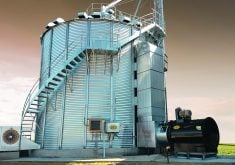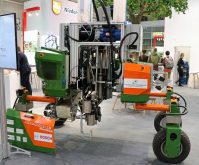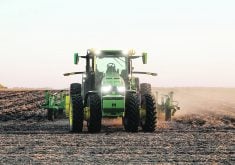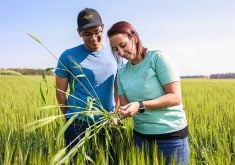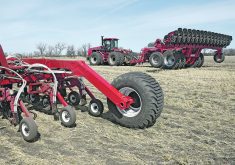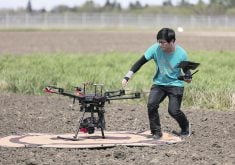Data is automatically collected and processed from sources such as on-farm weather stations and farm equipment
Farmers Edge’s approach is hands-on and wide-ranging.
“We go directly on to the farm and we install our canplug, which is our telemetry data capture device, in all four-wheel vehicles on the farm. We install weather stations across the grower’s farm, we take soil samples across the grower’s farm, as those are all critical information source that can be made to make management decisions,” said Jamie Denbow, product manager at Farmers Edge.
The Farmers Edge data platform automatically collects and processes data from the on-farm weather stations, farm equipment, daily satellite imagery, fertilizer applications, harvest data and soil tests.
Read Also

Farming Smarter receives financial boost from Alberta government for potato research
Farming Smarter near Lethbridge got a boost to its research equipment, thanks to the Alberta government’s increase in funding for research associations.
Users can look at an application map of where rates or variety trials were applied, then the treatment map can be overlaid on crop health maps throughout the year. Users can also overlay the treatment map over a yield map and then on a profit map.
Benchmarking is also an important part of its service.
“We have hybrid benchmarking, yield benchmarking across the farm and across regions. We also launched some preliminary next generation benchmarking, which is yield by organic matter, yield by planting date, yield by e.c. (electric conductivity), yield by soil conditions, and yield by weather conditions,” Denbow said.
The average yield of a particular hybrid by planting date can be calculated. Growers can even look at characteristics of their various fields to select hybrids that are more prone to perform well in the specific conditions.
“We basically have just taken all of the results from any field that was defined as the hybrid and they all get compiled into a data source together and then you can essentially benchmark your production or your yield of that particular hybrid against the compiled average of that particular hybrid in your specific geography,” Denbow said.
Growers can set narrow or broad graphical parameters for benchmarking.
When it comes to data analysis, garbage in causes garbage out, which is why Farmers Edge goes to great lengths to make sure the yield data is accurate.
The company uses a preliminary process of cleaning the yield data, and does not use any raw yield data in their analysis tools.
Farmers Edge also strives to ensure the yield data coming off combines is accurate.
“A grower can utilize one harvesting machine, one machine in the field that they know is calibrated properly, and they can utilize the values from that machine to calibrate another machine that is not properly calibrated. We can also utilize a grower’s known weight from a field, so if he is going over a scale or going to weight in any way we can utilize that information to post calibrate a yield map,” Denbow said.
Another method of ensuring high-quality data is coming from the yield monitors is a live recalibration, where a grain cart with a load cell on it communicates directly to a yield map. As soon as grain is dumped into the cart, a load cell on it communicates back to the yield map and does a live recalibration on the fly.
Images from the satellite imagery company Planet, which takes a picture of the Earth every day, are used and last year the company averaged a usable image of user fields every 2.5 days on average, Denbow said.
New features offered in Farmers Edge this year include the FarmCommand mobile app that has field-centric weather, map layers, record-keeping, and scouting tools.
Also new this hear is an inventory management tool, yield protection tool, growth stage modelling tool and improvements to eScout, a scouting tool app that featuring GPS, a comprehensive database of pests, an agronomic calculator, and includes frequent imagery from the Planet satellites.
Farmers Edge does not have any alignment with any input manufacturer to help the company keep the company’s recommendations independent.
Farmers Edge does not sell user information to a third party, and growers retain ownership of their data on Farmers Edge servers. If they choose to leave the service, they can take their data with them
There are five levels of services at Farmers Edge, from $1.50 to $6 per acre.






